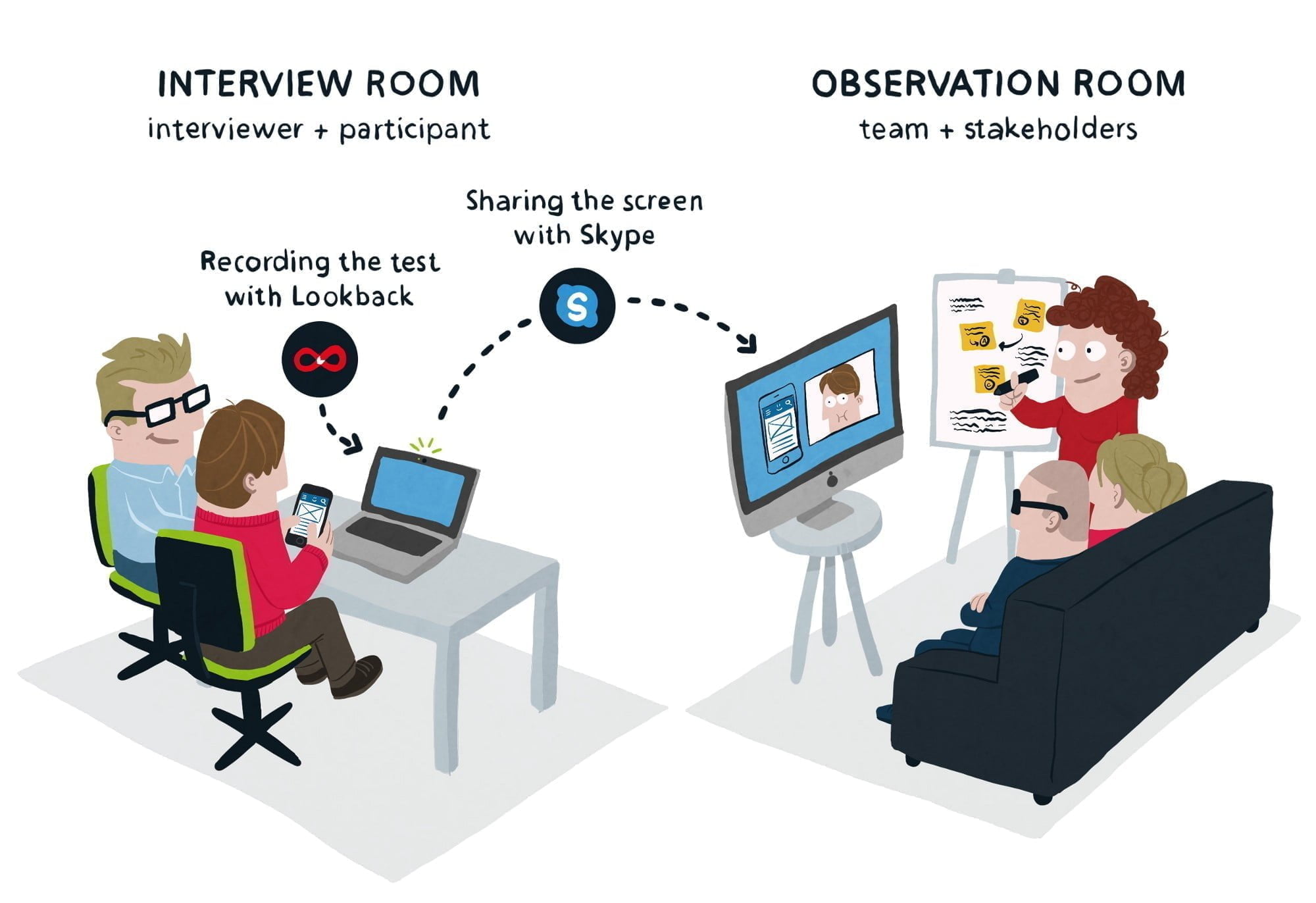“Trying to learn from customer conversations is like excavating a delicate archaeological site. The truth is down there somewhere, but it’s fragile. While each blow with your shovel gets you closer to the truth, you’re liable to smash it into a million little pieces if use too blunt an instrument” – Rob Fitzpatrick, “The Mom Test – How to talk to customers and learn if your business is a good idea when everyone is lying to you”
I won’t to avoid getting caught off guard and invalidating my session results.
How? I don’t make interviews into conversations – they are more about observations. The gap between what people say and what they do is a design opportunity. I’m looking for both quantitative and qualitative data. I will want to present different kinds of data to the team for analysis. To do this, I will triangulate using different methods to excavate the details as well as, the big picture using a combination of interviews and surveys or unmoderated session tests, for example. This will help the team validate our findings. During an interview I never interrupt or ask priming questions, and never offer assistance. I formulate non-leading probing questions without being imposing about an area where I need more information.
Fundamental questions:
We can start from most important or from most common questions if we don’t know the answer to them yet.
- What do the users need?
- What do the users want?
- What do that matters to them?
- Can they use the product?
Here are my techniques:
Echoing: Helping to clarify unclear comments.
Example: “This is not how I do things…” I say, “Not how you do things …?” Repeat the same words with a questioning tone, not derogatory. Using an interrogatory tone instead will eliminate judgment and help avoid suggests from the interviewer. Echoing will get the user to say more. However, some people will be too polite and wait for you to finish the question. You can nudge them by trying the echo again, “You said it’s ‘weird’ …?”
Boomerang: Is it even possible to do this? What do you think? Can I even login here: What would you do at home? And watch tone. Colombo: For non leading questions. Example: you swiped here…? Not over articulate or act like an expert. Be unimposing so the user drives the session and not me. Hopefully the user will rescue me…
Relax, I am testing products not people.
Make your interviewee comfortable: dress in a manner similar to them I love a nice suit but I dress down for interviews. Test users in a tracksuit and me in a suit could inhibit them from being more outspoken or engaged. Mitigating inhibition is crucial. Try not to come off as an expert. Make sure they understand you are testing a product or an idea and not the user themselves. I offer them a drink (non-alcoholic) with a little small talk (but only a little) before I start.
I want to keep the interview on time and heading in the right direction. Consequently, I use scripts that interviewers can reference for time.
Focus on the interviewee and not on note taking – it’s just plain rude to focus on notes – it also diminishes the power of observation. Maintain eye contact, keep a conversation flowing and record the interview rather than getting lost in note making. I can also use a separate not taker or rely on my script as a checklist. Preparing a script beforehand with areas for quick notation is best. A check box works great.
Thank the interviewee at the end of the process – not only is this polite but you can offer a chance for the interviewee to ask any question of their own at this point too. Yes, suggestions or feedback about the experience can be very insightful.
Reporting on User Interviews
User interviews tend to provide qualitative rather than quantitative data. Compiling the results of many interviews can be challenging. Word clouds and mind maps are two good ways of presenting qualitative data in an interesting but easy to understand format. Written reports are fine but try to contain them to the key data and leave all the minor stuff in appendices.
The Take Away
User interviews are a cheap and easy way to get data “straight from the horse’s mouth”. However, it’s important to bear in mind that there are limitations to this technique and you may discover what people say they do rather than what they actually do. Conducting interviews is simple. Write a script and go through it with the user. Make sure to keep the user informed and comfortable as you do.
